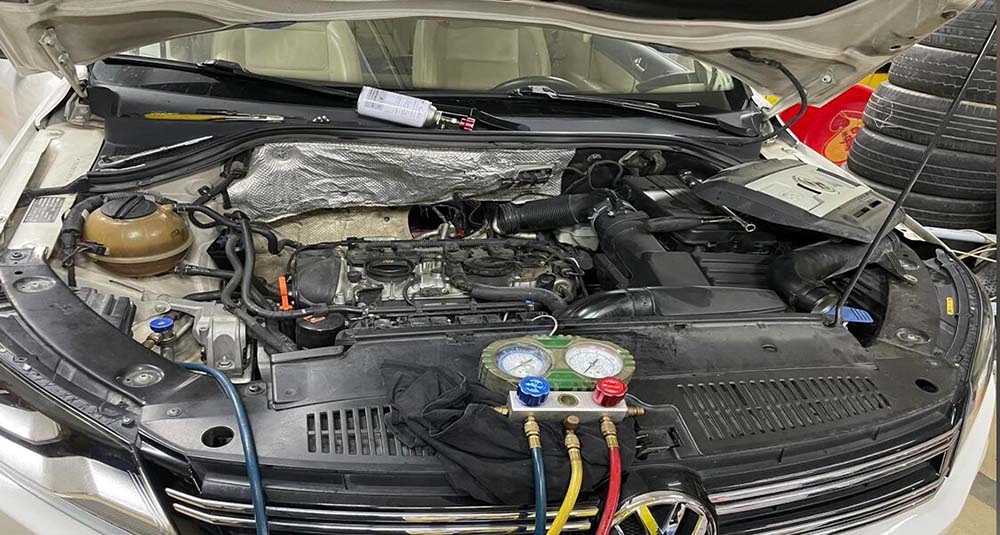Common Fault Symptoms:
Abnormal Cooling Performance:
- Reduced airflow and lower-than-usual temperatures (even freezing), resulting in poor cooling efficiency.
- Complete failure of cooling or extremely slow temperature drop.
Unusual Odors and Leaks:
- Detection of refrigerant or refrigerant oil-like smells inside the vehicle.
- Liquid leakage (e.g., fluorescent dye or refrigerant) from the evaporator drain pipe.
Mechanical and Operational Issues:
- Compressor operating continuously under high load with noticeable noise or abnormal sounds.
- Visible oil stains, carbon buildup, deformation, or corrosion on the evaporator surface.
Testing Methods:
Initial Inspection:
- Visual Examination: Check for cracks, corrosion, or leaks in the evaporator.
- Temperature Assessment: Measure the temperature at the AC vents. A significant deviation from the normal range (e.g., below 10℃ and weak airflow) may indicate evaporator icing or blockage.
Professional Diagnostic Tools:
- Fluorescent Dye Test: Inject fluorescent dye into the refrigerant system and observe leaks via the drain pipe under UV light.
- Fluorine Detector: Use a leak detector at vents; an alarm signals refrigerant leakage.
- Pressure Test: Measure system pressure with a manifold gauge; abnormal low-side pressure may indicate blockages or damage.
- Leakage Testing: After removing the evaporator, apply pressure and submerge it in water to check for air leakage.
Additional Factors for Consideration:
- Compressor Behavior: Frequent cycling or continuous operation without effective cooling may signal faulty evaporator temperature sensors.
- Vehicle Performance: Severe evaporator issues may correlate with reduced engine power or increased fuel consumption due to excessive compressor load.
Note: If symptoms arise, start with visual and temperature checks, then confirm faults using fluorescent dye or pressure tests. Timely repair is critical to prevent compressor damage or complete AC system failure.

